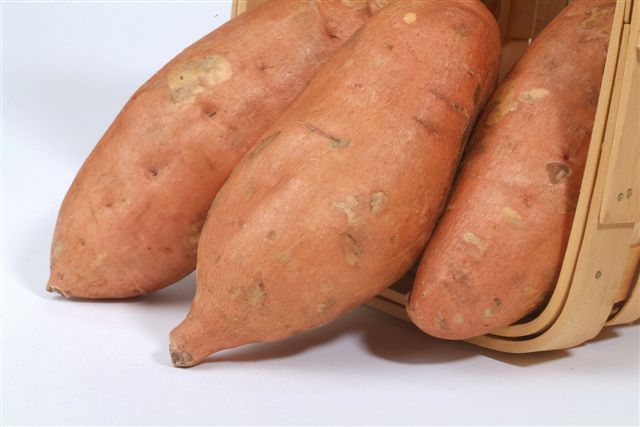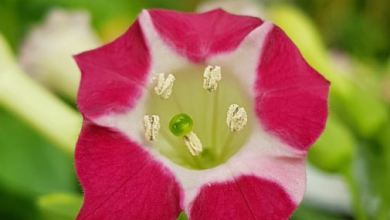Sweet Potatoes Attractive to Growers
Why are sweet potatoes so attractive to growers?

you know that sweet potatoes are healthy and versatile. you know that they’re delicious and that your kids will even agree to eat them. but why are they so attractive to growers?
you may not know that human beings and sweet potatoes (ipomea batatas) have a relationship that spans centuries.
sweet potatoes originated somewhere between central america and south america and were cultivated by the incas even before the year 1000 bc.
when spanish explorers first arrived in south america in search of gold, jewels and spices, they didn’t expect to find a treasure trove of vegetables that would become some of the world’s most important crops: corn, the irish potato and the sweet potato.
when the explorers took their vegetable riches back to spain and shared them with the english and other northern europeans, they must have been surprised to learn that the sweet potato was immediately considered a rare and expensive delicacy while the irish potato would take another two hundred years to be considered fit for human consumption.

by the sixteenth and seventeenth centuries, sweet potatoes had arrived in africa and asia as well, making them a global sensation.
these days, sweet potatoes are widely grown in asia, including japan and southern russia, in the warmer pacific islands, in tropical america and in the united states, as far north as new jersey.
there are over six thousand varieties of sweet potatoes globally. the international potato center’s gene bank now contains 5,526 cultivated accessions from 57 countries.
as we become more health-conscious, we will continue to turn to sweet potatoes for their nutrient-loaded goodness of vitamins a, c, e and b6. they are an excellent source of copper, magnesium, potassium and iron and their antioxidants can help prevent heart disease and cancer, the leading causes of death in the world. sweet potatoes also bolster the immune system and even slow aging by promoting good vision and healthy skin. moreover, they are fat-free and cholesterol-free.
sweet potatoes are becoming increasingly popular and are perhaps among the only vegetables that comply with the trendy vegan, paleo and microbiotic diets.

at home, sweet potatoes are considered a fabulous-tasting superfood and are a staple at american thanksgiving, christmas, new year’s and easter dinners, but they are no longer only used domestically.
sweet potatoes are sold by street vendors as a hot winter snack in china and egypt, they are made into a distilled spirit (sōchū) in japan and they are used to produce commercial sweet potato chips and flour. they are also dehydrated for use in animal foods.
the sweet potato plant has also become popular in ornamental foliage because of its lovely heart-shaped leaves and their variety of colors. the ipomea’s leaves are 15 cm long and are bright green and purple. when grown as ground cover, the plant stems typically mount to 23- cm-tall stems that later on trail down and spread up to 20-25cm wide. the ipomea is a perennial plant and rarely flowers.
today, with more than 133 million tons in annual production, the sweet potato ranks as the fifth most important food crop in developing countries after rice, wheat, maize and cassava.
could this be the reason growers are so attracted to the sweet potato?
it may also have something to do with the fact that according to the international potato center (cip), sweet potatoes produce more pounds of food per acre than any other cultivated plant, including corn and the irish potato.
thus for a grower who doesn’t have much land, the sweet potato makes even more sense.
in addition, sweet potatoes are not a difficult plant to grow. the sweet potato is a tuberous-rooted perennial that can grow over a wide range of climatic conditions where the average frost-free growing season is at least five months. days and night must be fairly warm, though sweet potatoes can also be cultivated in northern climates where new plants are obtained by planting roots or cuttings in beds. and though they require sufficient water, they have an extensive root system which makes for efficient use of soil nutrients.
sweet potatoes already constitute part of the diet of several billion people and its popularity shows no signs of waning. it is a leading crop in developing countries, is a relatively easy plant to grow and it is capable of producing more food per acre than any other crop, in terms of weight. it’s no wonder that growers continue to be so attracted to it.
the number of home growers choosing to cultivate sweet potatoes is also rapidly increasing. as more consumers join the latest hobby-gardening trend, more people are enjoying the benefits of home gardening. growing organic vegetables is proving to be not only environmentally friendly and cost-efficient, but also an excellent reason to exercise and relieve stress—and for families it is an educational, fun-filled and rewarding activity.




